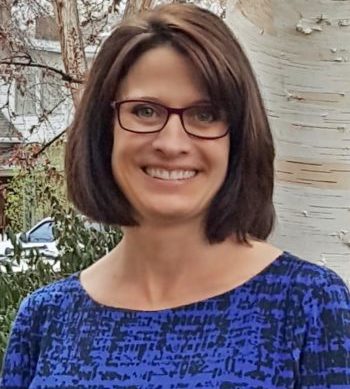
Laura Jensen, a Colorado native, was nearing graduation from high school when her father’s business failed in the economic morass of the 1980s, taking his livelihood and the family’s college fund down with it.
“Financially, I didn’t know how to make a college degree possible for myself but I knew without a degree my options down the road would be limited,” she says.
Jensen applied for and received Pell Grants as an undergraduate. She worked several jobs, including one as the evening receptionist at a mortuary, and shared a basement apartment with her sister – each paying $93 monthly in rent – to be close to campus. She enrolled in summer school at the local community college to save money, and limited her student loan debt by graduating early with a B.A. in psychology.
As soon as she paid off her undergraduate loans, Jensen returned to earn her M.A. in psychology (again with the help of student loans); nearly a decade later she went on to earn her Ph.D. in educational research – both accomplishments she never imagined were possible when she was in her teens.
That journey fueled her passion for helping individuals to reach their fullest potential. Early in her career she realized that data and research could inform policy decisions that could provide individuals from all walks of life authentic access to a college degree.
Access mission
As CSU’s associate provost for planning and effectiveness, Jensen has overseen the Office of Institutional Research, Planning and Effectiveness since 2010. She came to CSU after working at Front Range Community College but was hesitant to leave FRCC.
“I didn’t really see myself working at a four-year institution; the access mission of the community college reflected my personal values,” she says.
However, in 2008, she was approached by CSU to be part of its Student Success Initiative to improve graduation and student retention rates.
“I had no interest in overseeing an office that simply fulfilled mandated reporting requirements,” Jensen says. “But I knew that to achieve the goals of the Student Success Initiative CSU would need to be highly data-informed. That was exciting to me. It allowed me to bring my passion and experience to campus at a pivotal time.”
You can read more about the success of the Student Success Initiative in the Spring 2017 issue of CSU Magazine, available by mail and online in early June.
Data-informed decisions

That’s when Jensen and her office, fully supported by Patrick Burns, CSU’s dean of libraries and vice president for information technology, took time to automate most standard reporting processes and create data structures that would allow the office to better serve campus. After nearly a year of working on the long, arduous project, the re-imagined and more efficient IRP&E office began to play a critical role in informing the SSI.
“Prior to restructuring the data, there was no way to accurately track a student’s progress through the academic journey,” says Alan Lamborn, associate provost for educational attainment and former vice provost for undergraduate affairs. “With Laura’s passion and vision in this area, the research began to tumble out in ways that we found extremely powerful.”
Suddenly, nearly every facet of the student experience – both inside and outside the classroom – could be analyzed, with results presented in a way that campus could easily understand. Administrators and faculty could use the figures to spot trends and relationships between different activities and identify areas in need of attention to help students get the most education during their time at CSU.
Still, there were many more avenues to explore.
What works
Thanks to years of work and investments from a variety of people and University resources, CSU has instituted a number of programs – learning communities, redesigning academic guidance to incorporate academic success coordinators, The Institute for Learning and Teaching, etc. – that have significantly improved student learning and engagement. The byproduct of these efforts has been an increase in retention and graduation rates.
Jensen said SSI will continue to explore new ways to support student success, and that IRP&E will be there to contribute to those conversations.